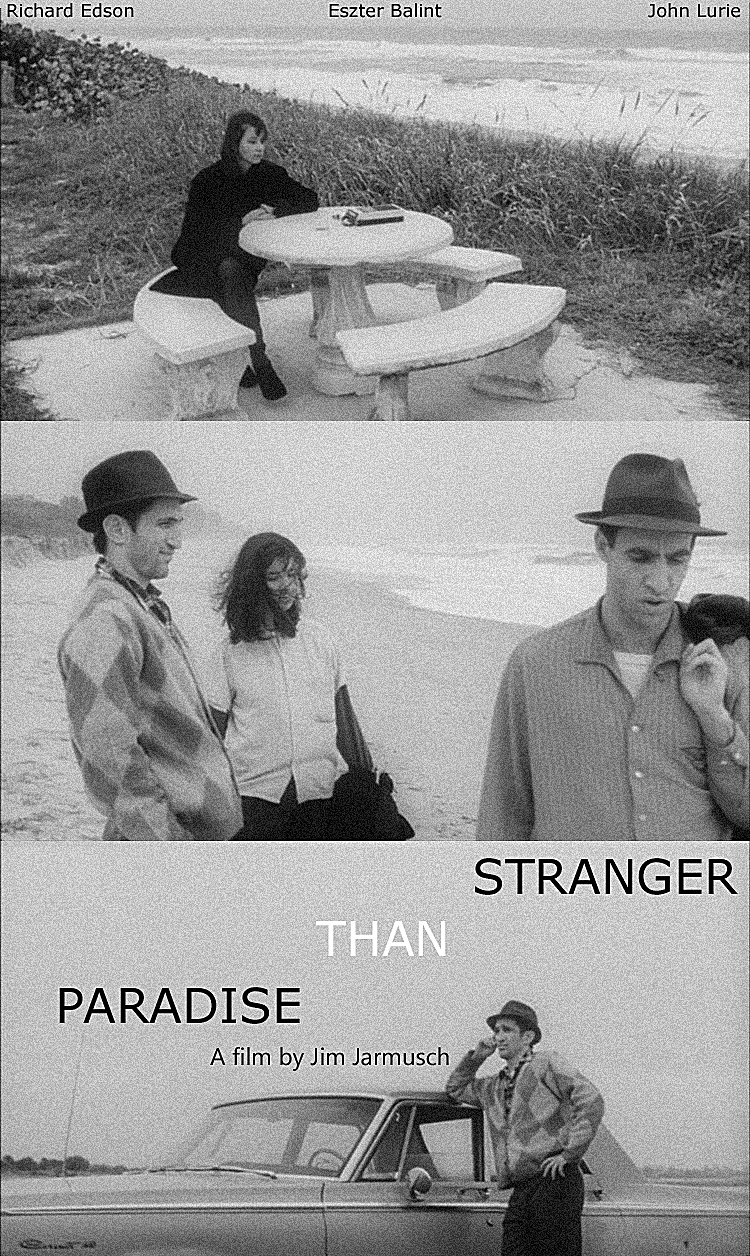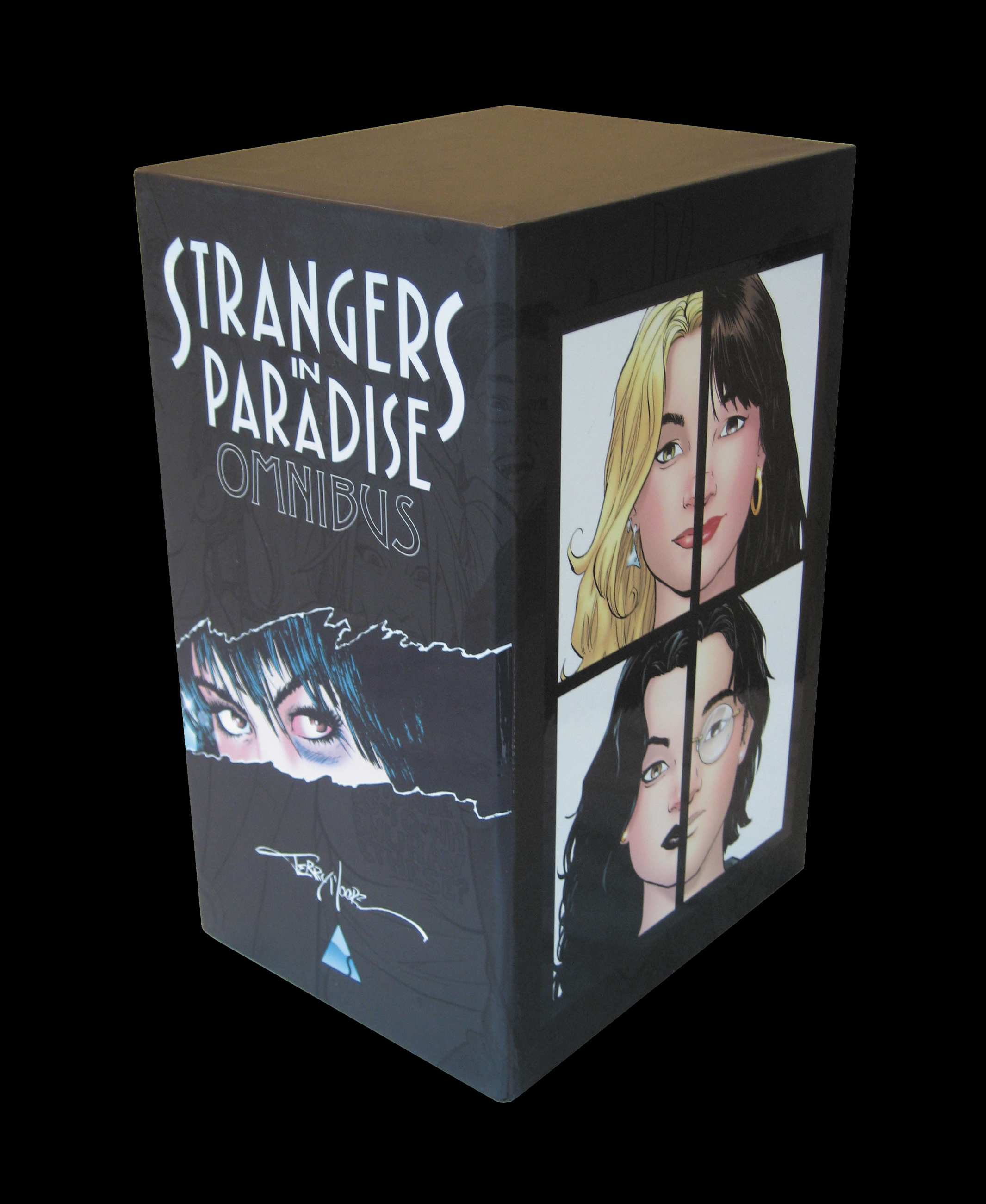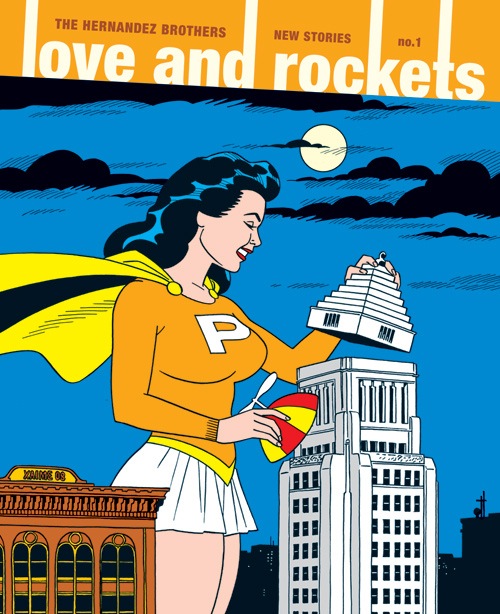 | ||||||||||||||||||||||||||||||||||||||||||||||||||||||||||||||||||||||||||||||||||||||||||||||||||||||||||||||||||||||||||||||||||||||||
| Strangers in Paradise by Terry Moore |
Interview September 2013 with Terry Moore of Strangers in Paradise fame over his works, comics and arts.
- I've seen Strangers in Paradise at Negative Burn number 13 on 1995 (I think) and for me it was a bit strange, since somehow (on my mind) I've connected SIP with the movie 'Strangers than Paradise' by Jim Jarmusch (not only on the title but also on the alienated feeling that the characters felt towards society on the book and the movie). So do you think that your comic work could be a bit influenced by that aspect that I saw at Jim Jarmusch movie?
 |
| Strangers than Paradise by Jim Jarmusch |
 |
| Negative Burn with Strangers in Paradise short story among authors like Neil Gaiman and Alan Moore |
TM:
Not really. I was thinking about people and how they go through life
and love like a bull through a china shop, just causing all sorts of
damage and drama. We live on a paradise planet full of beautiful men and
women and we have no idea how to behave and enjoy it. We are strangers
in a paradise.
 |
| Strangers in Paradise page |
- Do you think that Negative Burn was a good anthology that captured the spirit of us readers and you creators being elsewhere while creating new ground for the non-superhero comics?
 |
| Negative Burn issue 29 with Terry Moore's Strangers in Paradise along with other well known comics authors |
TM:
I think it was a good anthology series. It gave voice to many small
creators who needed help in finding a public. For instance, it allowed
me, a small time artist, to work with Alan Moore who even back then was
considered to be a something like a Greek God.
 |
| Alan Moore |
2. It's
interesting to see how your characters and storytelling frame a perfect
symbiosis with text and image (we can see there cinematic angles and
you even introduced prose and poetry on some of your Comics aswell as
music and lyrics). Do you think that all arts could be mixed on a comic
book to give it, the meaning that comics are really an artform and not
merely comic books? Did you saw that potential on the 90's to create a
narrative on a comic book that merged all artforms?
TM:
To me a comic was a story told anyway you like. As long as you could
put it down on paper, it didn’t matter if the story used art, words,
poetry, song lyrics or music sheets or photographs of other materials
and story evidence. Anything goes when you make art. I never wanted to
draw every page alike. If you flip through my books, every page looks
different. I like that. It keeps the reader entertained but it also lets
me try to paint the whole whole world of the characters. If the
characters read books, you should be able to look over their shoulder.
If they hear music, you should hear it. It makes the fictional world
more real, and thats’ what we want, isn’t it? To live there with them.
 |
| Strangers in Paradise print - Art Nouveaux style |
3. Another visual aspect's that we see a comic book in black and white, and at some point on SIP, you started writing it while picturing it on your mind on color (or so I remember reading this). If you wanted to put color on them which artist would you think would be suitable for this job and do you also think that perhaps with color, the Indie aspect of this work would lose its charms?
 | ||
| cover to SIP - I Dream of you - TPB |
TM:
Sometimes I think color would be nice. I think more people would try my
books if they were in color. But Strangers In Paradise is too big now.
It’s 2400 pages!! To color it would cost a fortune. So I no longer think
about it. It is what it is until some big crime syndicate buys it and
funds the coloring with their massive illegal fortune.
 |
| Strangers in Paradise - Page |
4. Your characters Katchoo and Francine were great and I as a reader I've thought of them as strong characters, while being idylic (almost ultra romantic characters), I also loved the way you dealt with Casey Bullocks, Darcy Parker, David and Freddie Femur (another ultra romantic character), do you see them as strong, romantic while being fierceless and why do you pick such strong female characters instead of male ones? Did you feel at the time that you could reach through your works to female readers and their sensitive type? (On some of your fan letters, I remember they telling you that both boyfriend and girlfriend were in love with SIP).
 |
| Katchoo character of SIP by Terry Moore |
TM:
I prefer to write about women because there are enough stories about
men. And most women I know are pretty strong, so... there.
5. You started this series on 1993 with Antartic Press, then you moved the second volume to your own abstract studio on 1994. Did you thought at the time that you could have the full control by yourself with this series by doing almost everything yourself? (writing, drawing, promoting and distributing it).
 |
| Issue 1 of SIP - Antarctic Press |
TM:
In the U.S. you can self-publish because we have the direct market,
where the indy creator can list the book with a distributor and sell
direct to the retailer on a no-return basis. If the book is popular, you
can make a better living publishing yourself than letting a publisher
take it and give you a small percentage. This is not possible in europe
where the newstand is so very important and only a publisher with some
power can get you into them. So I’ve published myself and that is why I
am still here after all these years. A publisher would have dropped me
many times by now, I’m sure.
 |
| Strangers in Paradise - Issue 9 - Abstract studios |
6. On 1996 SIP were published at Homage comics that were part of Wildstorm. Did you thought at the time that it was good for you to exchange ideas with Kurt Busiek and Warren Ellis on a more writer-driven-line? How did you felt about it at the time?
 |
| SIP - Homage - Issue 6 |
TM:
I never worked with the other creators at Homage. I went with Homage
because Jim Lee invited me personally and I knew that with him involved
my book would be in every comic book shop in the world. And for that
year at Homage, it was. Anything Jim Lee makes goes into every comic
shop in the world. You can’t beat that.
 |
| Deathblow by Jim Lee |
7. Then you moved again to your abstract studio at the ending of the 20th century; did you thought at the time that you wanted to have your characters back again, being independent from any comics publisher and that on the turn of the century would be good for you to have full control of the story that you were developing?
TM:
I went back to self-publishing because it was difficult for me to
adjust to so many other people being involved in the process. So many
hands touching the book, sometimes causing delays. I preferred to do it
myself and keep the process simple.
 |
| SIP -Issue 81 at Abstract studios |
9.
How was it for you to end Strangers in Paradise that earned several
awards and had lots of people that were really hooked on the plot
(either female or male). Do you see 'Strangers in Paradise' as your
'baby' like Neil Gaiman does with his Sandman series?
 | ||
| Neil Gaiman's "The Sandman" Brief lives page |
TM:
SiP is my life’s work, for sure. I am proud of the series and I’m glad
that, after all that work I have something to show for my years at the
drawing board. But the best thing is I made a magic place in my head and
shared it with the world. That is an incredible feeling.
 |
| SIP - Omnibus - complete |
10. I remember at the time comparing Love and Rockets by Los Bros Hernandez with SIP over the alienation feeling, do you think that both series have something in common?
 |
| Love and Rockets new stories by Los Bros Hernandez |
TM: I don’t know. I’ve never read that series.
11. There are rumours that your work 'Rachel Rising' will turn out on a Tv series, is it right?
 |
| Rachel Rising issue 2 by Terry Moore |
TM: They are trying. All I can do is hold my breath and hope it works out.
12. What were your major influences on the other arts while doing SIP? (writers, movie directors, poets and musicians)
 |
| How to draw by Terry Moore |
TM:
Basically every creative person in music, art and literature over the
last 400 years! Seriously, my interest in creative people and the arts
knows no limits, and I have just as many heroes in every past decade and
century as I do living ones today. Composers, rock bands, pianists,
violinists, illustrators, underground cartoonists, fine arts, sculptors,
writers, great physicists... my god, the inspirations are endless. And I
use it all. It all goes through my brain and leaks out the end of my
pen. I’m a creative mess.
13.
How do you see the future in comics? Do you think that today (with all
things being made on the hour due to technology) the comics market has
(still) place for a series like SIP?
TM:
I don’t know how SIP would be received today. America is so terribly
violent now. Sex is not popular in America now because of decades of
disease and predator crimes. It’s not the same America that gave you
Playboy and Marilyn Monroe. This is the CSI America, the one that has a
gun crime problem. SiP is a romance story with a sexual undertone. I’m
not sure the American kids of today could relate to it. Everything is
“pervy” to the young generation. I don’t know about other countries. I
hope sex and love are still popular in the rest of the world. Hopefully,
America will see you having a good life and return to their senses.
Thanks Terry for the nice interview
 | ||
| Italian playboy magazine with Pamela Anderson on the cover |








No comments:
Post a Comment